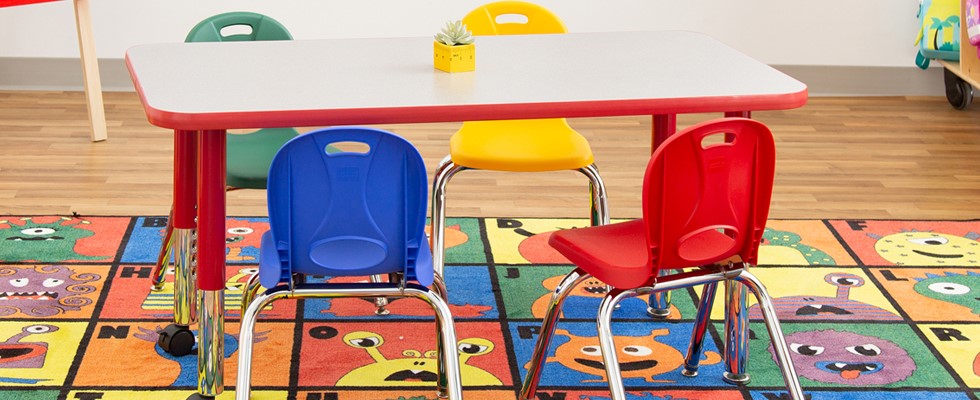
Everyone knows that classroom décor can set the mood for learning, whether the subject calls for fun creativity or intense focus. Classroom colors are an important element to consider, especially when working with a limited budget.
Color in schools can positively influence students in several ways, and a study from Texas Tech University found “a relationship between color preferences, emotions, and academic performance in students.”
Here are some of the best colors for learning environments and how they may help improve both your students’ mental health and their grades.
Use bright, fiery colors to inspire
If you want to energize your students, the best classroom color schemes are going to include “loud” colors. Red, orange, and yellow are ideal for boosting student performance and each color has been shown to have its own special effect.
Red is well-known for being an eye-catching color, but it can also increase alertness in school and office settings. Vibrant reds can excite students and may help stimulate creativity.
Similarly, orange is an energizing color that can have a positive effect on circulation. This means that some students will feel encouraged to think outside the box and more actively participate in class.
Yellow has long been dubbed “the creative color” and some studies suggest that this color increases creativity and attention. This sunny color can radiates positivity from decorations or classroom boards and can help improve the moods of students throughout lessons.
While studies have shown that the effects of these colors are largely temporary, they can be perfect for transitioning students from social time to study time and help draw their attention without much direction. You can take advantage of these colors with red classroom mobile chairs or green collaborative tables.
Use cool colors to calm
Teachers looking to soothe or de-stress their students should incorporate more tranquil colors into their décor. These include more natural hues: blues, greens, purples, and even browns – all colors you regularly see outdoors.
Blue and green already have a reputation as “cool” colors, but research has shown that they can literally help facilitate changes in body temperature. This can help keep students comfortable on hot days and can even curb their appetites, making it easier for everyone to make it to lunchtime without losing concentration.
Blue calming rugs can make a big impact on your classroom, while blue or green mobile bookcases can offer a tranquil and inviting space for students to find resources.
Purple is another calming classroom color that also stimulates imagination. Purple pencil boxes and notebooks can spark creativity during artistic activities or quiet study time.
Brown soft seating seems unlikely as a candidate for a calm classroom, but research suggests that having this color in learning spaces can make students feel secure and relaxed, giving them a bit more energy and attentiveness throughout class.
There are seemingly endless ways to use color in your learning spaces to support the academic performance and mental health of your students. Whether you prefer a bright, bold classroom to inspire creativity or a cool and calm space to encourage focus (or something in between) our room designs can help get you started.
Have questions? We’re here to help! Our experts are available by phone at 1-800-260-2776. You can also get personalized assistance through our or by emailing us. We’re available Monday-Friday, 8am-7pm.
Sources
Gaines, Kristi S, and Zane D Curry. “The Inclusive Classroom: The Effects of Color on Learning and Behavior”, Journal of Family & Consumer Sciences Education vol. 29, no. 1, Spring/Summer 2011.
Cherry, Kendra. “Can Color Affect Your Mood and Behavior?” Verywell Mind, Verywell Mind, 28 May 2020, https://www.verywellmind.com/color-psychology-2795824.


